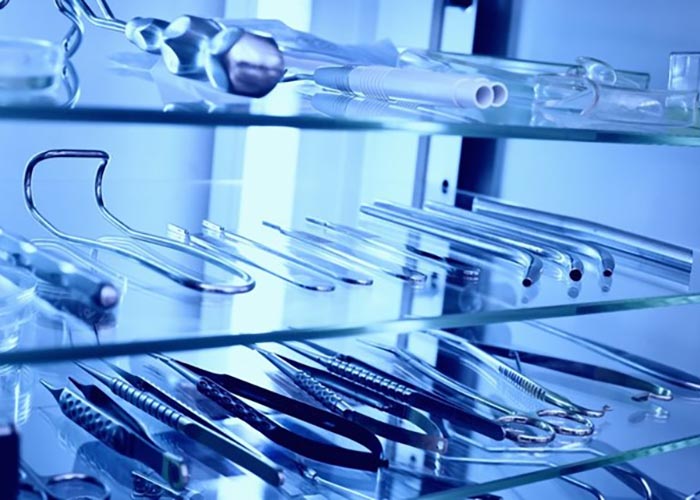
Sterilization and Disinfection
Sterilization and disinfection are the basic components of hospital infection control activities. Every day, a number of hospitals are performing various surgical procedures. Even more number of invasive procedures are being performed in different health care facilities. The medical device or the surgical instrument that comes in contact with the sterile tissue or the mucus membrane of the patient during the various processes is associated with increased risk of introduction of pathogens into the patient’s body. Moreover, there is chance of transmission of infection from patient to patient; from patient or to health care personnel, and vice versa [e.g., hepatitis B virus (HBV)]; or from the environment to the patient (e.g., Pseudomonas aeruginosa, Acinetobacter spp.) through the improper sterilized or disinfected devices. A number of outbreaks and infections were reported in the hospital setup because of improperly sterilized devices. Many infections were reported throughout the world due to use of contaminated endoscopes. Hence, adequate decontamination techniques for medical and surgical devices are needed in all the health care facilities. The health care providers are equally responsible for the reduction and elimination of such infections. Every hospital should have its own guidelines of sterilizing and disinfecting items on the basis of their intended use of medical devices and associated infections. Currently, there is an increase in frequency of newly emerging and multidrug-resistant pathogens in all health care centers for which only few/if any treatments are available. Hence, the medical personnel, laboratory people, and health care providers should have better knowledge regarding these techniques to prevent the spread of these pathogens
Sterilization
Sterilization is defined as a process of complete elimination or destruction of all forms of microbial life (i.e., both vegetative and spore forms), which is carried out by various physical and chemical methods. Technically, there is reduction ≥106 log colony forming units (CFU) of the most resistant spores achieved at the half-time of a regular cycle
Classification of Medical Devices and/or Equipment
Decontamination is the process of removal of pathogenic microorganisms from objects so that they are safe to handle. Cleaning is defined as removal of visible soil (e.g., organic and inorganic materials) from the surfaces and objects. Technically, it achieves minimum reduction of ≥1 log CFU of microorganisms
Classification of Medical Devices and/or Equipment
The principal goal of cleaning, disinfection, and sterilization is to reduce the number of microorganisms on the device to such a level that the probability of transmission of infection will be nil. The risk of transmission of infection depends on the type of device. For example, in case of blood pressure–measuring cuff, the device that comes in contact with the skin carries least risk of transmission of disease. On the other hand, devices that come in contact with the neural tissue of a patient suffering from Creutzfeldt–Jakob disease (CJD) have high risk of transmission of infection
The antimicrobial spectra of different methods are different from each other. Hence, health care personnel should have adequate knowledge for the selection and recommendation of different sterilization and disinfection methods. A brief knowledge about the compatibility, toxicity, odor, and irritability due to various agents/methods is essential and useful for achieving adequate decontamination
Sterilization, Disinfection, and Cleaning in the Health Care Facilities
Sterilization, disinfection, and cleaning in health care facilities include disinfection and cleaning of environmental surfaces with/without cleaning and reprocessing the medical equipment. The former includes mainly the noncritical items such as surfaces, floors, and high-contact surfaces (sinks, telephones, switches board, bed railings, trolleys etc.). It is observed that regular cleaning of all these housekeeping surfaces dramatically reduces the transmission of the infection
